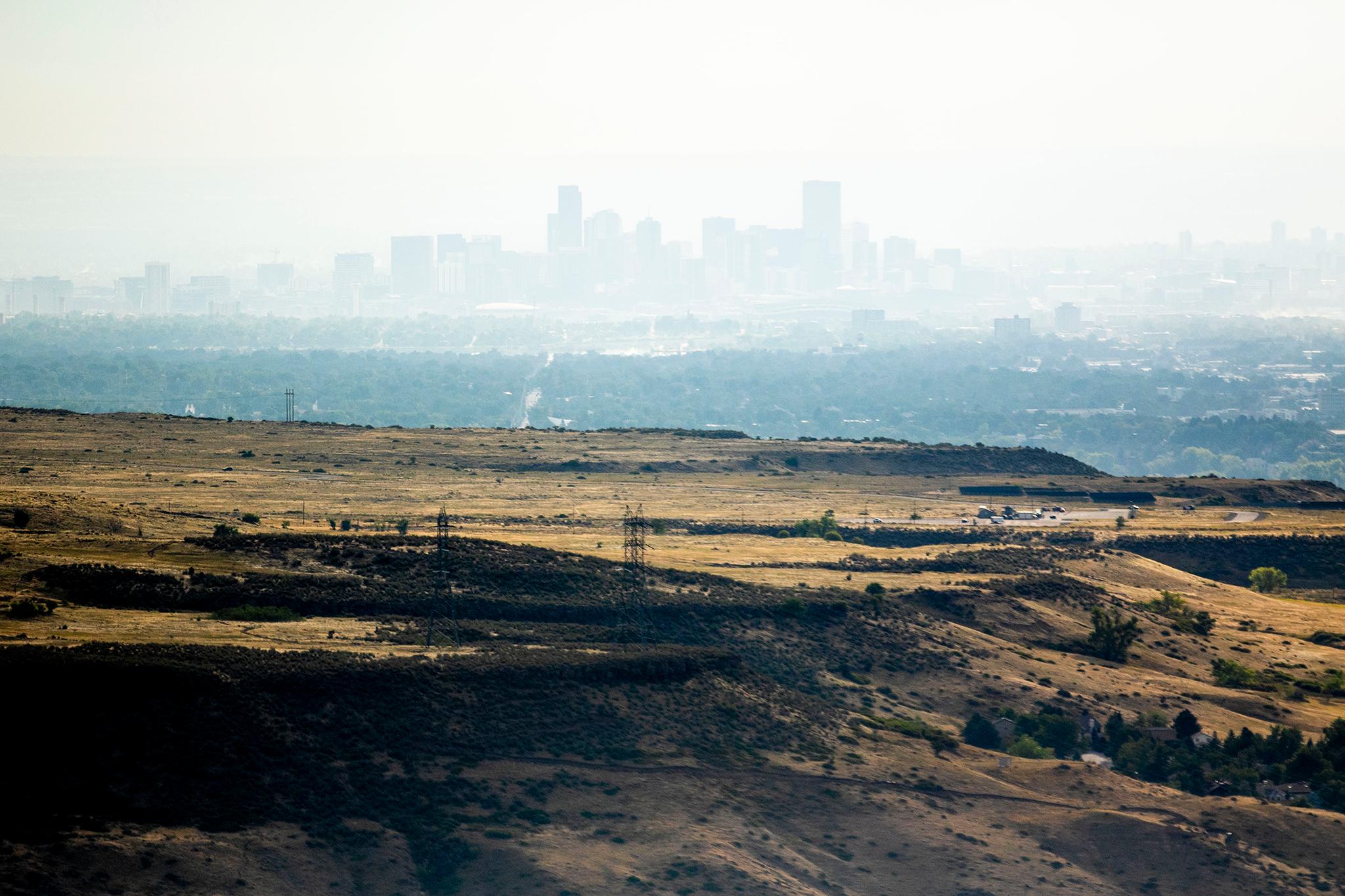
Colorado air commissioners passed a new ozone plan on Dec. 15, approving rules and programs they acknowledge won't be enough to meet a federal deadline to improve Front Range air quality.
The plan comes as the region continues to struggle with unhealthy levels of ozone pollution each summer. So why would a governor-appointed panel vote for a plan the authors say is inadequate?
A metaphor might help explain.
Think of the Front Range as a failing student. For more than a decade, that student hasn't earned the grades to graduate, so a teacher requires the parents to help write a plan to get their kid back on track.
But those parents decide it’d be nearly impossible for the student to meet a 2024 deadline to pass the class. To stay in good standing with the school, they submit a plan anyway and promise it will be enough to earn an acceptable grade by 2026.
That's basically what happened at Colorado's Air Quality Control Commission last week, but a more thorough explanation requires some background.
For more than a decade, Colorado's Front Range has failed to meet federal standards for ozone, a dangerous lung irritant associated with asthma attacks, heart disease, lower birth weights and premature death.
To make matters even more confusing, the federal government maintains two separate air quality standards for the pollutant. Official air monitors along the Front Range often measure ozone concentrations above 80 parts per billion each summer, surpassing both a 75 parts per billion federal standard set in 2008 and a 70 parts per billion standard established in 2015. The World Health Organization’s standard is even lower at 60 parts per billion.
Local and state air regulators have spent months working on a plan to reduce ozone levels, but they've acknowledged it lacks sufficient incentives and regulations to meet the tougher 70 parts per billion standard by a 2024 deadline. The Front Range has until 2026 to meet the weaker 75 parts per billion standard after the U.S. Environmental Protection Agency declared the region a "severe" ozone violator earlier this year.
Mike Silverstein helped write the plan in his role as the executive director of the Regional Air Quality Council, the lead air quality planning agency for the Front Range. He says submitting an inadequate plan to the federal government comes with a distinct advantage: It lets the state fulfill its legal obligation under the Clean Air Act and effectively reset the deadline from 2024 to 2026. Doing this makes it easier for the state to align all its ozone plans around one timeline.
"The real goal is to get to both standards by 2026," Silverstein told CPR News in an interview earlier this year.
The strategy infuriated climate and environmental justice advocates. Many groups called on the Air Quality Control Commission to reject the current version of the plan and rewrite it with regulations to limit emissions from vehicles and oil and gas operations, the two leading sources of ozone ingredients along the Front Range.
Ahead of the hearing, Colorado air regulators also acknowledged a major error in the data underlying the ozone plan.
Correcting the data revealed that hydraulic fracturing and drilling would likely emit nearly double the expected amount of nitrogen oxide pollution, one of the two ingredients required to form ozone in the atmosphere.
The updated predictions now show drilling and fracking alone will likely produce more ozone-causing emissions in 2023 than every vehicle on the road. Business groups representing the oil and gas industry claim the new modeling is flawed and have called for revisions.
The corrected data led regulators to ask air commissioners to hold back part of the plan to revisit new rules for the oil and gas industry next year.
Commissioners agreed with the request. On Thursday, they voted 7-1 to approve the flawed plan to meet the 2015 ozone standard. The lone “no” vote came from former Boulder County commissioner Elise Jones, who said the state can't keep failing to meet its obligations under the Clean Air Act.
"I can't in good conscience sign off on yet another plan that we know falls short of achieving healthy air for the region. I want to signal the status quo isn't sufficient," Jones said. "We need to do more and do it faster."
At the same time, the commission also agreed to hold back parts of the plan and directed state staff to evaluate a list of potential ozone-reduction strategies in 2023. Those include prohibiting the sale of gas-powered lawn equipment, adopting California's policies to promote electric vehicles and enacting seasonal restrictions on oil and gas activities like drilling and fracking.
Oil and gas representatives quickly praised the final decision. Dan Haley, the president and CEO of the Colorado Oil and Gas Association, said the industry looks forward to "continuing efforts to identify and expand strategies to improve air quality and reduce ozone."
Reactions from environmental groups varied. Lorena Gonzalez, a climate campaign manager for Conversation Colorado, said the final decision "missed the mark" by failing to pass a plan to meet federal standards. Still, she said the organization appreciated the state's commitment to revisit the issue next year.
Other climate justice groups were more critical, saying the commission continued a long tradition of failing to write effective ozone regulations.
“We were asking them to send a message that things are different now,” said Jeremy Nichols, the director of the climate and energy program for WildEarth Guardians. “Instead, seven of eight commissioners voted to kick the can down the road yet again.”
The state legislature must approve a final version of the plan before it's sent to the EPA for review.








